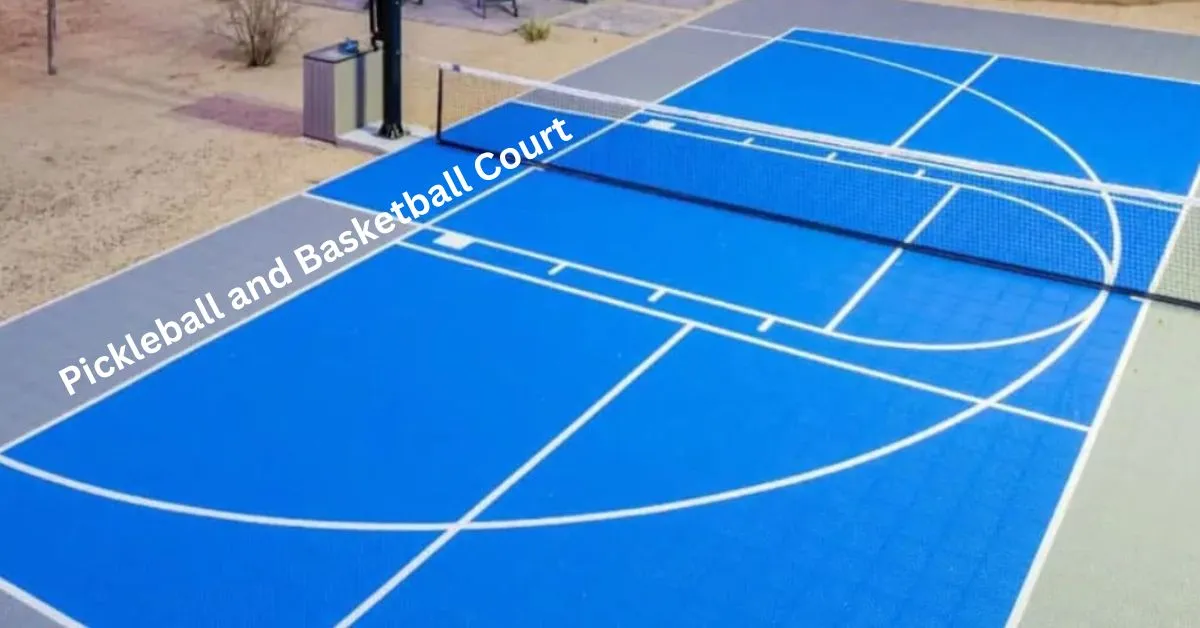Pickleball is a versatile and exciting sport that is often played on multi-use courts shared with other sports like tennis and basketball. However, the choice of line colors on these courts plays a significant role in defining the gameplay, ensuring safety, and optimizing court usage. In this comprehensive guide, we will delve into the world of pickleball court line colors on multi-use courts, offering insights, expertise, and practical information to help you understand their importance.
Pickleball is a rapidly growing sport, and many enthusiasts have found it convenient to play on multi-use courts. These courts accommodate various sports, making them a versatile and cost-effective solution for communities. However, the presence of multiple lines from different sports can lead to confusion and safety concerns. Pickleball court line colors address these challenges, making it clear and safe for players.
The Role of Pickleball Court Line Colors
Pickleball court line colors serve multiple essential purposes:
- Clarity: With the use of distinct colors, it becomes easy for players to identify the boundaries of the pickleball court amidst the lines of other sports. This clarity is essential for fair gameplay.
- Safety: Clear and properly colored lines reduce the risk of accidents and collisions. When players know where to expect lines from other sports, they can avoid potentially hazardous situations.
- Efficiency: Multi-use courts are in high demand, and efficient use of the space is crucial. Clear line colors enable quick transitions between different sports, maximizing court usage.
- Consistency: Standardizing line colors across different courts ensures a consistent playing experience. Players can confidently step onto any multi-use court and know what to expect.
Standard Pickleball Court Line Colors
The Pickleball court uses specific colors for its lines:
- Baseline: The baseline is painted in a solid, uniform color, often green or black. This helps players identify the back boundary of the court.
- Sidelines: Sidelines are also painted in the same color as the baseline. This uniformity ensures that the sidelines are easily distinguishable from the other court lines.
- Non-Volley Zone (Kitchen): The non-volley zone, also known as the kitchen, is outlined with a solid line. It is painted the same color as the baseline and sidelines.
- Centerline: The centerline, which divides the court into two equal halves, is also painted in the same color as the baseline and sidelines.
- Service Courts: Service courts are identified by a different color, often red or blue, to make them stand out from the rest of the court. This differentiation helps players serve accurately.
Impact on Gameplay
The use of standard pickleball court line colors significantly impacts gameplay. Here's how:
- Serving Accuracy: Service courts with different colors help players serve accurately. The contrast between the service court and the rest of the court aids in precision.
- Boundaries: Players can easily identify the boundaries of the court, ensuring that the ball is in or out. This clarity reduces disputes and keeps the game moving smoothly.
- Non-Volley Zone: The solid line outlining the non-volley zone is crucial for players to know where they can and cannot volley the ball. This rule promotes strategic and fair gameplay.
- Transition: On multi-use courts, line colors make it easier for players to switch between sports swiftly and without confusion.
Safety Considerations
Safety is a top priority on multi-use courts. The use of pickleball court line colors plays a significant role in ensuring a safe environment:
- Visibility: Clear and contrasting colors make lines highly visible. Players can see the lines from a distance, reducing the risk of tripping or accidental collisions.
- Clarity: The distinction between lines helps players avoid confusion and keeps them on the right court. This prevents them from accidentally wandering into the path of balls from other sports.
- Direction: Standardized line colors provide a sense of direction and orientation, helping players navigate the court with confidence.
FAQs
Why are pickleball court line colors important on multi-use courts?
Pickleball court line colors are essential for clarity, safety, efficiency, and consistency on courts shared with other sports.
What are the standard line colors for a pickleball court?
The baseline, sidelines, non-volley zone, and centerline are typically painted in the same color (e.g., green or black), while service courts are a different color (e.g., red or blue).
How do line colors impact pickleball gameplay?
Line colors affect serving accuracy, boundary determination, adherence to the non-volley zone, and seamless transitions on multi-use courts.
Are line colors standardized across all pickleball courts?
Yes, standardized line colors ensure a consistent playing experience on all pickleball courts, whether they are dedicated or multi-use.
Do line colors improve safety on multi-use courts?
Yes, clear and contrasting line colors enhance visibility, prevent confusion, and provide direction, making the court safer for players.
How can I find multi-use courts with proper line colors?
Local sports facilities, community centers, and public parks often provide information about multi-use courts with proper line colors for pickleball.
Conclusion
Pickleball court line colors on multi-use courts are not just a matter of aesthetics; they are a critical component of safe and efficient gameplay. By understanding the significance of these colors, players can enjoy a more streamlined and secure experience on the court, ensuring that pickleball remains a fun and accessible sport for everyone.


No comments yet